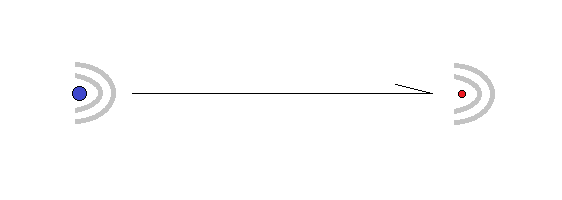Welcome to Cantillon's Europe, a board game based on Richard Cantillom's book on political economy.
The game takes place on a map of Europe, and can be played by 2 to 6 players. Each player is a sovereign ruler with the power to tax, wage war, and invest in productive capital.
Getting started
Order of game play is determined by dice toss or any other means suitable for this purpose.
To keep track of the various stages of gameplay, the game comes with a progress sheet. At the centre of this sheet, there is a wheel divided into six segments. These segments are marked with the numbers 1 to 6. The first player puts a flag of their chosen colour on the segment marked 1, the second player puts their flag on the segment marked 2, and so on for all players.
The map
The full map of Europe has 80 land areas and 29 sea areas. Land areas are marked with numbers, and sea areas are marked with letters. 12 land areas come with a city, marked as a black circle, and 7 of these cities come with a port, marked with an anchor. Note that cities are not independent areas, but part of a larger terrain. Any piece occupying this terrain is automatically part of the city and visa versa.
 |
| First draft of the map |
The map can be folded in various ways to produce smaller maps. This allows for smaller campaigns. Any map configuration can be chosen as long as it has at least one city for each player. For example, a Nordic campaign can be played with up to 3 players, while an Atlantic campaign can be played with up to 4 players. Players can in this way scale their campaigns according to how many players they are, and how much time they want to spend playing.
When playing with a reduced map, only regions with a visible number or letter are included. No piece can occupy an unmarked region.
Pieces and markers
There are 3 types of military pieces:
- Taxman = flag with no base
- Army = flag with round base
- Navy = flag with rectangular base
Resource markers come in 3 primary colours (red, blue, yellow) and three secondary colours (purple, green, orange). The large resource markers represent land production. Their value is 1. The smaller markers in primary colours represent basic factory products. Their value is 2. The small markers in secondary colours are advanced products. Their value is 8.
Factories come in brown and three secondary colours. The brown ones are basic factories. The other ones are advanced factories.
Initial positioning
Each player chooses 1 area with a city as their starting point. This happens in reverse order of game play so that the player with the advantage of making the first move has the disadvantage of being the last to choose a city.
Each player puts 2 taxmen in their area. One that must remain in the city, and another that will move into an adjacent area or fleet. If the city comes with a port, put a fleet at the anchor. A resource token of appropriate colour is put on the land of the chosen city.
Any player can build a fleet if they occupy a coastal region. However, only ports come with a free fleet, and only when chosen as a starting city.
Game play
The basic idea of this game is that there is a constant flow of resources from land and into the hands of sovereign rulers. This constant supply of resources from nature and the labour of subjects is endless. Resources cannot dry up, so if there is a lack of tokens available at any stage of the game, new tokens must be created, or the players hoarding resources must resort to accounting so as to free up tokens for game play. E.g. A player hoarding ten yellow 1 value tokens can note this on a piece of paper before returning the tokens for further game play. However, most players will not resort to hoarding. They will spend their resources by returning tokens to the heap in return for factories, armies, so there will rarely be a lack of tokens.
Any taxes collected that are not spent by a player remains with the player. There is no limit to how much a player may hoard, but hoarders must be prepared to resort to accounting as described above if so required.
A player loses the game when he has no more cities. When this happens, the victorious player gets control of all armies, fleets, taxmen, factories and land that belonged to the defeated player. The game comes to an end when all enemies have been defeated, or when an agreed upon goal has been achieved.
Gameplay is divided into 8 stages. Only when a player has gone through all stages, is it time for the next player to do the same. To keep track of this, each player takes their turn moving their flag across the progress sheet. No mandatory stage (marked with a purple frame) can be skipped, and a player cannot move backwards. Once progress has been made into a new stage, going back to fix things cannot be done unless all players agree to this.
The stages ask for the player to:
- Tax (mandatory)
- Pay troops (mandatory)
- Expand
- Build new military units
- Position military units
- Generate land and factory output (mandatory)
- Build factories
- Finalize negotiations
Tax
Resource tokens are collected from land and factories controlled by the player.
Pay troops
Player pays each army unit 1 value unit to be sustained. Army units that are not paid for are removed from the board.
Expand
Player expands by moving previously positioned taxmen, armies and fleets forward by 1. Taxmen can only move into unoccupied land, while armies can also invade enemy occupied land. Only fleets can invade enemy occupied seas.
There is no rule forbidding a player from attacking allied forces, so only a player's own units are considered friendly. All other units are enemies.
Units that are completely separated from all friendly cities by unoccupied or enemy occupied land and sea are considered isolated.
No unit can move in such a way that it becomes isolated due to the expansion. Nor can a unit move in such a way that other friendly units become isolated.
At the end of operations, all isolated units belonging to the player are removed from the board. The player may in other words start an expansion with isolated units. They are only lost if still isolated after operations. Conversely, having isolated enemy units does not guarantee victory. Isolated enemy units that are able to re-connect with friendly forces during enemy expansion are not lost.
Newly conquered land and factories are taxed. Defeated flags and military equipment are removed from the board.
Military units can only invade regions adjacent to them. A player can attack the same enemy unit multiple times if he has available units to do so, and it's up to the player to continue an attack or call it off at any time.
Expansion from sea into land happens by first placing an army or taxman together with a fleet. Only 1 army or taxman can occupy a sea region with a fleet. If the fleet is sunk while carrying a military unit, both the fleet and army unit is lost. Once a bridgehead has been established across a sea, the fleet acts as if it was land. It cannot be moved in such a way that it isolates the bridge head from friendly cities.
Cities are like armies in that they offer protection.
Armies invading unprotected taxmen win automatically. Armies invading land defended by an army or city must toss a dice and get a dice toss higher than the opponent. Areas defended by both an army and a city require two dice tosses. Only if both dice tosses come out winning is the defending army defeated, and the city captured. Defeated armies and fleets on either side of a conflict are removed from the board.
Cities come under siege if they are surrounded by enemy forces in such a way that the city has no access to land beyond what it has of its own. Such a siege must be broken by the attacked player during their expansion phase. If not, their city is lost. All units are removed. The city, with associated land and factories is then taken over by the first player to enter the area. No dice toss is required in order to enter an abandon or otherwise unoccupied city.
Build new military units
1 taxman costs 1 value unit to build
1 fleet cost 2 value units to build
1 army costs 2 value units to build
Position military units
Player positions all units in suitable positions within his landmass and adjacent seas in preparation for next round of expansion.
A land area can have up to 2 land units. A land area must have at least one taxman or army unit in order to be considered part of a player's landmass. Land with no units is not part of any player's landmass, and produces no taxable income.
Islands can only be occupied by first moving a taxman/army onto a fleet. Islands with no fleet connecting them to a friendly landmass is considered isolated.
Fleets act as extensions to land areas. Fleets can in this way be placed adjacent to each other to create a bridge between landmasses that are far separated from each other by water. Armies can for instance be moved from Africa to Iceland if the areas of sea between these two landmasses are all occupied by the player's fleets.
Army units can move freely through land that is not occupied by enemy units, but must come to rest inside the landmass of the player. Fleets can move freely through unoccupied seas, but must come to rest adjacent to land occupied by the player. Fleets cannot pass through sea regions occupied by other players without permission to do so. Permission can be negotiated or bought if the other player so wishes.
Negotiations and trade are allowed throughout game play, but is explicitly called for at the end of a player's turn. Negotiations can be held in private, if so desired. To do so, the players involved can leave the room for their talk. The other players may try to spy on them, but cannot disrupt discussions or sabotage them in any way.
Generate land and factory production
Player generates land production by putting large tokens (value = 1) of relevant colour onto occupied land.
Player generates factory production by supplying resources from his treasury. This yields higher value products represented by small tokens of relevant colour.
All types of production yield taxable income which is taxed at the start of the next round.
Build factories
Building any type of factory costs 2 value units. However, advanced factories cannot produce without basic factory products as input, so there's no point in building them before basic factories are in place.
There are 3 types of basic factories:
- Red (minerals)
- Blue (wood)
- Yellow (food)
These can only be built in regions with a corresponding colour. Every region has a colour code to indicate what sort of production it can sustain.
A region with a factory produces both land produce and factory goods as long as the factory is fully financed by the treasury. A basic factory takes local produce as its input. Example:
Yellow land produces 1 unit of pale yellow produce. Yellow factory takes on pale yellow unit to produce 1 unit of dark yellow produce. Pale yellow units have a value of 1. Dark yellow units have a value of 2. A region with no factory can therefore only produce 1 value unit every turn. But a region with a basic factory can produce 2 value units in profit every turn. Land produces 1 value unit without input, and a basic factory produces 2 value units with 1 unit input. This gives us 1 + 2 - 1 = 2.
A region can support 1 basic factory and 1 advanced factory, but no more.
Advanced factories come in 3 types:
- Purple (blue + red)
- Orange (yellow + red)
- Green (yellow + blue)
Such factories take 2 units of basic produce to produce 1 units of advanced produce. The basic products must be of the right colour combination, as indicated above.
The value of each advanced product is 8. But it requires 2 units of basic products to function, so its net value to the player is 4. This gives us the following hierarchy of value:
- Land produce = 1 -0 input = 1 net value to the player
- Basic product = 2 - 1 input = 1 net value to the player
- Advanced product = 8 - (2 + 2) = 4 net value to the player
Net value calculations are only useful in order to determine net benefits of investments. Products stored in a player's treasury are valued at face value because all expenses for their production have already been paid. Advanced products have face value of 8. Basic products have face value of 2, and land produce has face value of 1.
A fully developed region with 1 basic factory and 1 advanced factory produces the following net profit:
- Land: 1 value unit
- Basic factory: 2 value units - 1 value unit in input = 1 value unit
- Advanced factory 8 value units - 2 basic units each with a value of 2 = 4 value units
Advanced factories can be placed in any region occupied by a player. They are valuable, but it takes time and resources to get them up and running. They are also vulnerable to supply chain disruptions brought on by enemies.
Finalize negotiations
Player finalizes trade and military negotiations before handing gameplay over to the next player.
The player can at this point choose to end their participation in the game. In the case of a 2 player game, this cedes victory to the other player. However, in multi-player games, there are several options. The player can choose to burn everything to the ground by removing all pieces, or the player can hand control of areas and associated pieces to other players. The player can also choose to do a bit of both. There's no limit to this. A player can even auction off regions and associated capital for real money if the other players are thus inclined.













